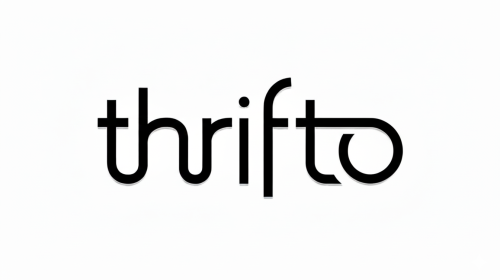Possible Risks Affecting Financial Inclusion in Nigerian Micro-Insurance Market

By
Dr Pius Apere (PhD/FCII)
(Actuarial Scientist and Chartered Insurer)
Introduction
The financial sector (including the insurance industry) is one of the key drivers of any economy across the world, as the sector provides a solid framework in accelerating a sustainable economicgrowth thereby impacting direct benefits to the poor leading to poverty reduction and financial inclusion. For instance, without insurance, savings/loan schemes, Federal Government social empowerment programmes etc. for the poor cannot prevent them falling back into poverty in times of financial crisis. Insurance can also protect those that have risen above the poverty level against unforeseen events that may cause them to fall into poverty again. Thus, insurance can ensure a solid foundation on which poverty alleviation is built to keep the individual out of poverty.
In spite of the critical rolesof insurance sector in the economy, available statistics have shown that the sector is underperforming in the implementation of the National Financial Inclusion Strategy (NFIS) in Nigeriadue to several challenges facing the sector.The abysmally low levels of insurance penetration and actual financial inclusion target achieved at less than 1% and 4% respectively in a country of about 200 million peopleshows that the insurance sector’s potential is largely untapped. This narrative can only be changed by deepening the development of the micro-insurance market.
The insurance regulator, NAICOM, has issued micro-insurance guidelines(“GUIDELINES”) in January 2018 with the aim of deepening insurance penetration and achieving the required financial inclusion target. However, the effective implementation ofthe micro-insurance agenda in its entirety has some challenges and/or risks and the ways to mitigate these risks are highlighted below.
Risk of limited Number of Micro-insurance service providers
The regulator has prescribed a limited scope of micro-insurance business,as stated in Appendix II of the GUIDELINES,that a micro-insurer is allowed to only underwritebusiness with sum insured of not more than N2m per person per insurer.The above is a very good idea but it has implications in terms of interpretation, pricing and enforcement.If the foregoing is only applicable to the micro-insurers whilethe conventional insurersare still allowed to underwrite business with sum insured of less than N2m, then there is likely to be apathy among the conventional insurers toapplyfor a national micro-insurer licence as permitted by NAICOM. Thus, the above would lead to limited number of micro-insurers.
It is worthy to note that, in practice, allconventional insurerscurrently have significant proportion of business with less than N2min their insurance portfolios.If the right interpretation ofthe limited scope isalsoto ring-fence the micro-insurance business byrestricting the conventional insurers from underwriting business of less than N2m, then the regulator shouldalso be able to exercise its political muscle and/or will toenforce it in order to allow for a level playing field.
The above asymmetric operational guidelines would also limit the micro-insurers’ volume of sales as a result of competition from the conventional insurers, leading to their inability to recoup sales expenses, low profitability and insolvency. This would also discourage external investors to apply for micro-insurance licence.
Risk Mitigation – The regulator can increase the number of micro-insurers by downscaling the un-recapitalized conventional insurers under the new capital regime to register as National Micro-insurers to serve the low-income segments. These insurers would leverage more on their existing IT infrastructure, quality staff, clientele and higher capital base.
Risk of Inadequate Capital to Write Business
There is usually a regulatory requirement for long term insurance underwriters to set aside money (free capital or free assets) when writing a new policy in order to meet the initial capital strain as required immediately afterthe payment of the first premium. The initial capital strain is the mathematical reserves plus any required solvency capital less the initial net cash outflow (i.e. first premium less initial commission and expenses).
The tiered based minimum capital requirements for micro-insurers as provided in the GUIDELINES is an indication that the micro-insurers are more likely to have the challenge of inadequate capital to write the desired level of new business volume than the conventional insurers. In the same vein, customers would prefer topurchase insurance fromNationalMicro-Insurers than Unit Micro-insurers due to potential risk of failure to meet claims payment by the latter due to its limited capital base, a scenario that will also create no level playing field amongst micro-insurers.
Risk Mitigation – Regulator may reconsider the minimum capital base for Micro-Insurers after careful evaluation of the practical and operational constraints.
New business risks
A micro-insurer will need to ensure that the capital and administrative requirements of writing new business are within the financial resources available to it. Thus, an inappropriately high volume of new business could lead to the available resources becoming inadequate. On the other hand, an inappropriately low volume of new business arising from a newly introduced product line may pose a risk of not recovering the fixed development costs that will already have been incurred.
Risk Mitigation–The new business capital strain can be controlled by appropriate product design.
Mis-selling and reputational risk
The target market lacks insurance information and understanding thereby opening the door for deliberate mis-selling by micro-insurer agents, striving to reach sales targets or higher commission levels, leading to reputational risk and increase in policy lapse rates.
Risk Mitigation – Providing the agents with suitable and adequate training of the insurer’s products and good selling practices, including good, clear sales literature.
Risk ofnot meeting ConsumerExpectations
Micro-insurance consumers with their limited knowledge in insurance principles do not trust insurers and also so sceptical about paying premiums for an intangible insurance product with future benefits that may never be claimed. Many policyholders are unaware of the coverage, particularly when they are forced to purchase insurance when borrowing. On the other hand, there is potential for expecting more than is actually provided by limited benefits (e.g. the prescribed sum assured limit of N2 million).
Risk Mitigation – By educating the target market to create awareness and overcoming its bias against insurance, a processwhich is costly and time consuming but itwould reducethe lapse rates.
Operational Risk
There may be lack of relevant and adequate data for adopting community or group pricing (as required by the GUIDELINES) to reflect the specific risks to the target market.The margins per policy are generally low due to the low premium/benefit nature of micro-insurance and so micro-insurers need to aim for high sales volumes to be profitable. Micro-insurer needs innovative product design for its target market via research and Development (R & D) to differentiate itself from competitors.Micro-insurersmay lack the necessary capital to invest heavily in good IT infrastructure for efficient record keeping relating to collection of premiums and claims management.
The non-uniform corporate governance structure (in Appendix V of the GUIDELINES) for the senior Management team of the three categories of micro-insurerscould give investors and/or consumers the expression that some micro-insurers may not be managed and/or run properly for lack of adequatemanagement experience.
Risk Mitigation – The use of mobile phone companies and direct online marketing to sell micro-insurance products would increase the insurance penetration and financial inclusion. Outsourcing some key operational functions such as actuarial and product development services. The above would create operational and marketing efficiency.
Conclusion
The process of managing the identified risks facing the tiered micro-insurers alongside the conventional insurers is akin to solving venn diagram problems, having considered the areas of differences and the commonalities existing between the key players in the insurance market.







Leave a Reply